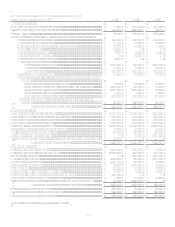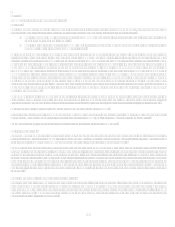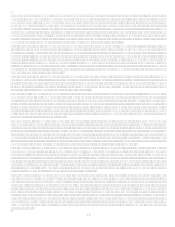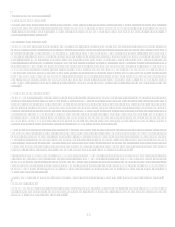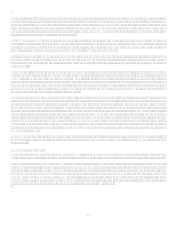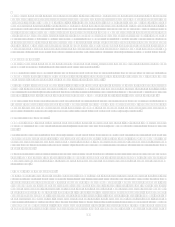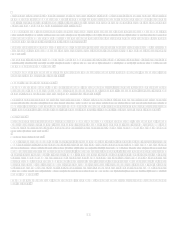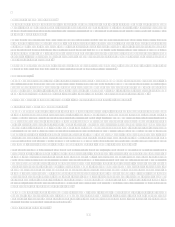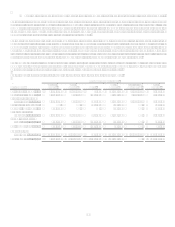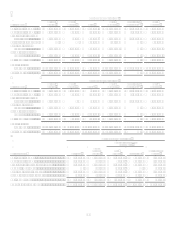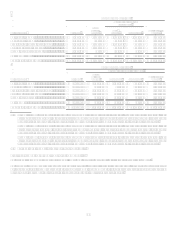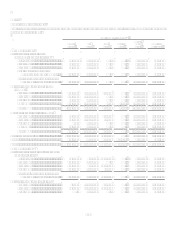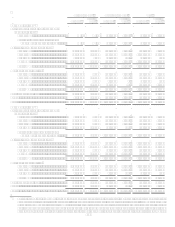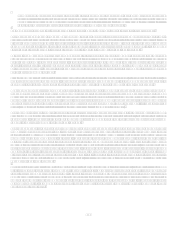Capital One 2008 Annual Report Download - page 113
Download and view the complete annual report
Please find page 113 of the 2008 Capital One annual report below. You can navigate through the pages in the report by either clicking on the pages listed below, or by using the keyword search tool below to find specific information within the annual report.95
Revenue Recognition
The Company recognizes earned finance charges, interest income and fee income on loans according to the contractual provisions of
the credit arrangements. For credit card loans, when the Company does not expect full payment of finance charges and fees, it does
not accrue the estimated uncollectible portion as income (hereafter the suppression amount). To calculate the suppression amount,
the Company first estimates the uncollectible portion of credit card finance charge and fee receivables using an estimate of future non-
principal losses. This formula is consistent with that used to estimate the allowance related to expected principal losses on reported
loans. The suppression amount is calculated by adding any current period change in the estimate of the uncollectible portion of finance
charge and fee receivables to the amount of finance charges and fees charged-off (net of recoveries) during the period. The Company
subtracts the suppression amount from the total finance charges and fees billed during the period to arrive at total reported revenue.
The amount of finance charge and fees suppressed were $1.9 billion, $1.1 billion and $0.9 billion for the years ended December 31,
2008, 2007 and 2006, respectively.
For other consumer loans and commercial loans, the Company places loans in a non-accrual status, which prevents the accrual of
further interest income, when a loan reaches a pre-determined delinquency status, generally 90 to 120 days past due.
Interchange income is a discount on the payment due from the card-issuing bank to the merchant bank through the interchange
network. Interchange rates are set by MasterCard International Inc. (MasterCard) and Visa U.S.A. Inc. (Visa) and are based on
cardholder purchase volumes. The Company recognizes interchange income as earned.
Annual membership fees and direct loan origination costs specific to credit card loans are deferred and amortized over one year on a
straight-line basis. Dealer fees and premiums are deferred and amortized over the average life of the related loans using the interest
method for auto, mortgage and commercial loan originations. Direct loan origination costs consist of both internal and external costs
associated with the origination of a loan. Deferred fees (net of deferred costs) were $323.9 million, $389.7 million and $372.2 million
as of December 31, 2008, 2007 and 2006, respectively.
Marketing
The Company expenses marketing costs as incurred. Television advertising costs are expensed during the period in which the
advertisements are aired. The amount of marketing expense was $1.1 billion, $1.3 billion and $1.4 billion for the years ended
December 31, 2008, 2007 and 2006, respectively.
Fraud Losses
The Company experiences fraud losses from the unauthorized use of credit cards, debit cards and customer bank accounts. Additional
fraud losses may be incurred when loans are obtained through fraudulent means. Transactions suspected of being fraudulent are
charged to non-interest expense after an investigation period. Recoveries related to balances treated as fraud losses are also recognized
in non-interest expense. See Note 15 for total fraud losses.
Income Taxes
The Company accounts for income taxes in accordance with SFAS 109, recognizing the current and deferred tax consequences of all
transactions that have been recognized in the financial statements using the provisions of the enacted tax laws. Deferred tax assets and
liabilities are determined based on differences between the financial reporting and tax bases of assets and liabilities and are measured
using the enacted tax rates and laws that will be in effect when the differences are expected to reverse.
Valuation allowances are recorded to reduce deferred tax assets to an amount that is more likely than not to be realized. See Note 16
for additional detail.
Segments
The accounting policies of operating and reportable segments, as defined by the SFAS No. 131, Disclosures about Segments of an
Enterprise and Related Information, (SFAS 131) are the same as those described elsewhere in Note 1. Revenue for all segments is
generally derived from external parties. The Local Banking segment receives funding credits related to deposits. Performance
evaluation of and resource allocation to each reportable segment is based on a wide range of indicators to include both historical and
forecasted operating results. See Note 3 for further discussion of the Companys operating and reportable segments.


